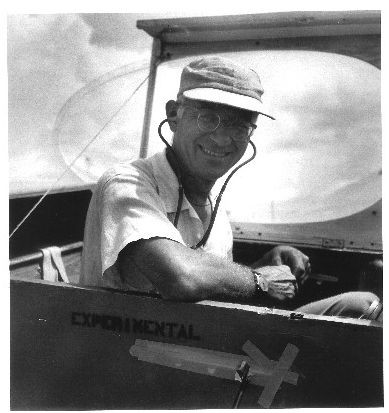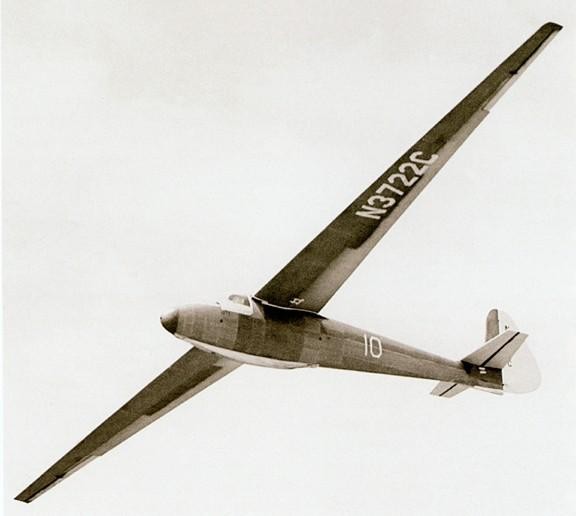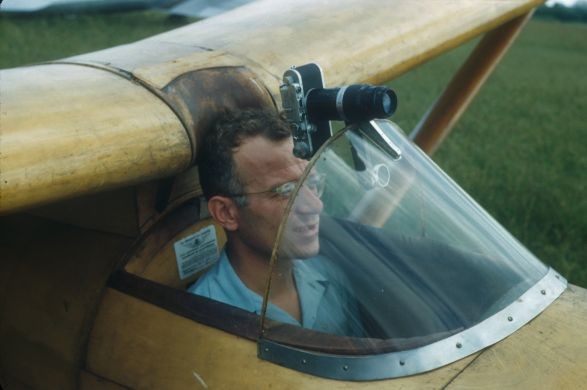August Raspet
1956
about
(1913-1960) SSA Director; Sailplane Aerodynamics; National Competition; OSTIV Rep
Awards
Tuntland Award 1952
Bio

An important criteria for selection to the Hall of Fame is, as the name implies, FAME, which can be achieved by spectacular soaring accomplishments or by many dedicated years of contributions to the sport of soaring. Dr. August "Gus" Raspet is known for many years of spectacular and dedicated accomplishments and contributions to the science of the sport.
As stated by Fred Matteson, "Dr. August Raspet's scientific contributions to the fields of aeronautics, meteorology, ornithology, the sport of soaring and other fields were very numerous. They are generally well known and documented since he spoke at many meetings and his papers were widely published both here and abroad. His contributions to society, however, do not rest solely with his scientific achievements, to say the least, but these other things which he has so freely given to the world do not appear in print."
Dr. Raspet, also known as Gus, was born in Irwin, PA August 24, 1913 and was educated at Carnegie Institute of Technology (BS in Physics, 1935) and the University of Maryland (MS in Physics in 1940; PhD in 1942). Upon graduation he worked as Research Physicist for the Gould Aeronautical Division of Pratt Read and Co., Deep River, CT. In 1943 He became Research Physicist with Specialties, Inc., of Syosset, NY where in 1946 he was Director of Research for the Thunderstorm Project. In 1949 he joined Mississippi State College and starting in 1953 served as Head of the Aerophysics Department. Dr. Raspet lost his life in April 1960 due to the crash of a Piper Cub during a demonstration of boundary layer modifications.

Dr.Raspet's son, Dave, describes three characteristics that define his father: 1) He was intensely dedicated to the scientific method and only believed the results of well-run experiments. 2) He sought the big breakthroughs, not the incremental improvements and was comfortable accepting the high risk of failure. 3) He was an extrovert who enjoyed the company of like-minded people often accepting them as part of his family.

Some of Dr. Raspet's best known efforts include the Thunderstorm Project, the Ridge Flow Project and, at Mississippi State, bird flight with vultures, drag reduction, laminar flow airfoils, sailplane performance measurements, and boundary layer control. He was mentor to many pilots including Dick Johnson, Paul MacCready, Ray Parker, Al Backstrom, Dick Schreder and Bruce Carmichael.
Perhaps from the soaring pilots' viewpoint, Dr. Raspet's most famous project was with the RJ-5. Dick Johnson brought this partially complete sailplane to the university in late 1949. The RJ-5 had been designed by Harland Ross for Dick. This sailplane design was the first applicaiton of a laminar flow airfoil in the United States. It had an aspect ratio of 24 and a wing loading of 5.5 psf. Gus and Dick decided upon seven significant changes - the most dramatic of which was changing from mid-wing to high-wing. They aimed for better high speed performance - thinning the horizontal tail and reducing its span. Eventually, with additional changes, the L/D reached 40 -- the first design in the world to do so. To quote Dave Raspet - "The RJ-5 revolutionized sailplane design to such an extent that Martin Simons in his book Sailplanes 1945-1965 divides the era into 'before the RJ-5' and 'after the RJ-5.'"
Dr. Raspet was an SSA Director, an active representative to OSTIV and recieved the Tuntland Trophy in 1952.
In the words of Bruce Carmichael -- "For this brotherhood whose lives were raised above the normal level through contact with the dynamic enthusiasm, imagination and encouragement that Gus gave without limit, there can never be another to take his place."